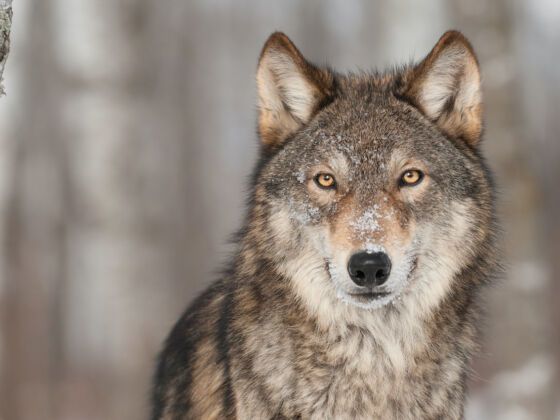[Editor’s Note: This post is sponsored by our friends at the State of Montana.]
WOLF MATING SEASON is nigh in Yellowstone National Park. As the Druid pack descends on a herd of elk for a kill, an interloper, a lone wolf trying to ingratiate himself with the pack, waves his tail playfully, like a flag, to win the graces of potential mates. The alpha male moves to drive him off. The elk herd splits like two schools of fish. For now, the wolves stay hungry on the frozen volcanic slope.
Meanwhile, the remnant human population in the park is more welcoming to newcomers. Beginning in mid-December, snow coaches — motorized over-snow vehicles — ferry human visitors through the valleys and over the plateaus of the country’s oldest national park to the Old Faithful Snow Lodge.
Along the way, naturalists, park rangers, and concessionaires help visitors in their quest to witness wildlife in action — without the cars and crowds of summer.
